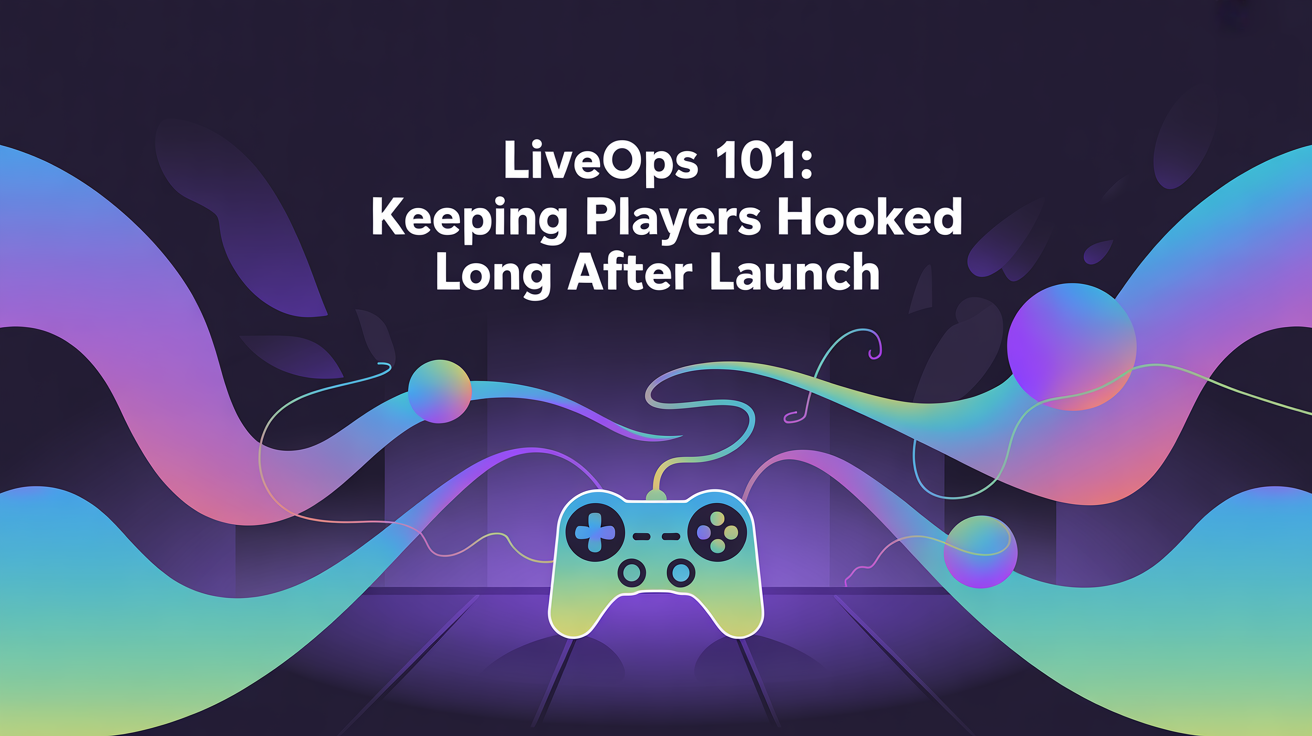LiveOps 101: Keeping Players Hooked Long After Launch
LiveOps 101: Keeping Players Hooked Long After Launch
What is LiveOps in Gaming?
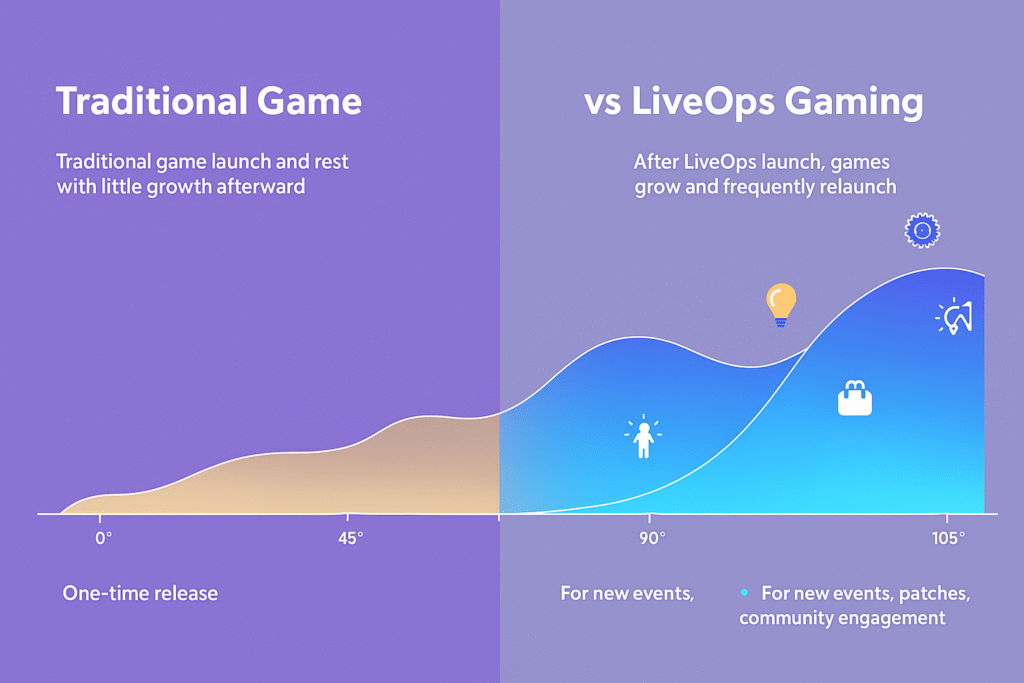
In the world of gaming, “LiveOps” (an abbreviation for “Live Operations”) is the continuous upkeep, update, and betterment of a game once it has been launched. LiveOps treats a game like a living world, always growing with fresh events, content, and updates shaped by players, not just a one-time release.
Instead of ending at launch, LiveOps keeps games alive and evolving, guided by player feedback and real-time data. As evidenced by the fact that 95% of studios create or maintain live-service titles and that LiveOps-powered games today generate 84% of mobile in-app purchase revenue, LiveOps promotes growth and profitability.
LiveOps strategies and best practices for player retention
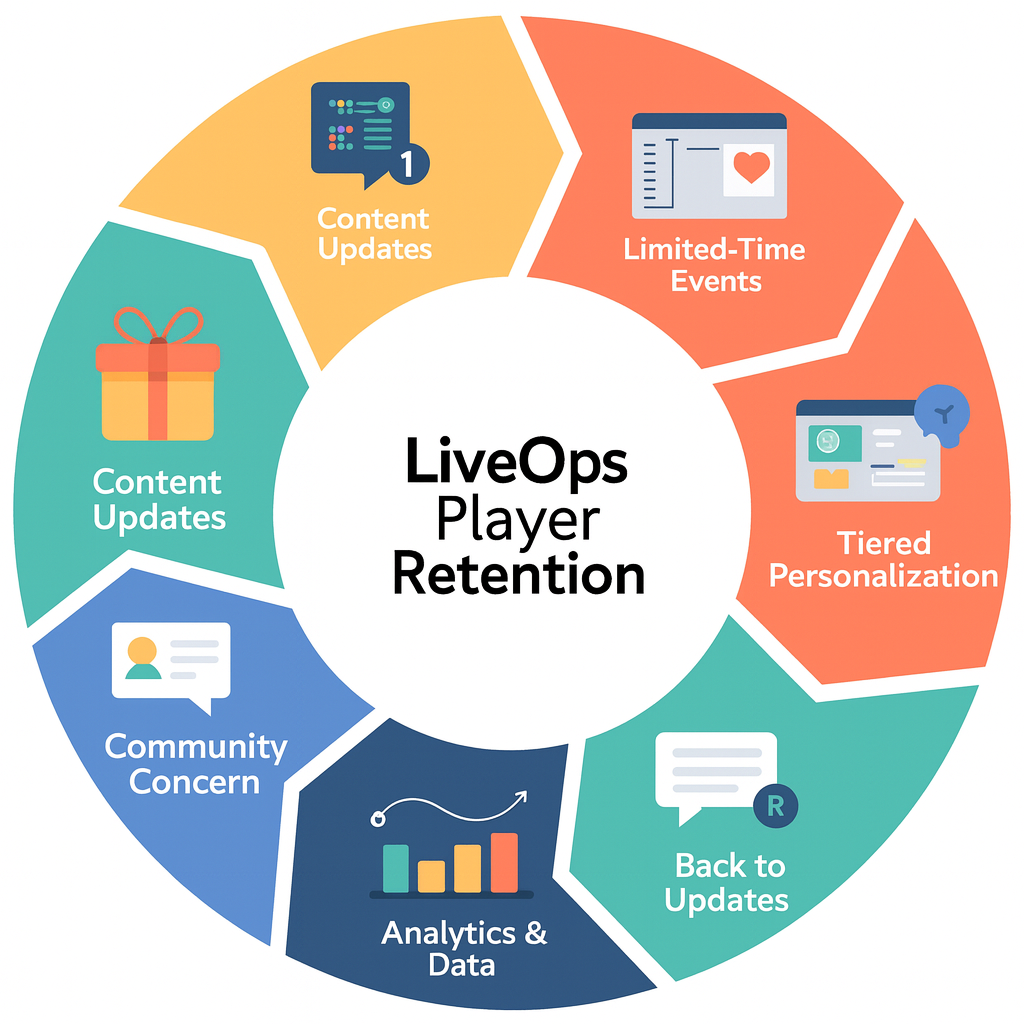
LiveOps is one of the most successful methods for keeping players engaged long after a game’s release. In other words, it’s about keeping the game fresh, fun, and rewarding so that players always have something new to anticipate. As a result, if done correctly, it not only entertains them but also makes them feel truly appreciated.
1. Make content exciting and reassuring.
Players feel more excited when updates have a clear release date, not just a sudden launch.
- Small, Regular Updates: If patches are released periodically, it shows the game is still alive and actively supported. In addition, regular updates reassure players that developers care about the experience.
- Big Seasons/Events: Schedule larger LiveOps events and updates every few months to create hype and anticipation.
- Change It Up: Switch between competitive, casual, and co-op events each week to keep things fresh.
2. Create Excitement with Limited-Time Events.
The fastest way to build urgency is by making event experiences time-limited.
- Exclusive Perks: Getting limited-time skins, gear, or cosmetics makes gamers feel special. For example, unique seasonal skins create lasting memories and keep players invested.
- Seasonal Themes: In order to make events stick, associate them with holidays or game stories.
- Avoid Burnout: In order to keep things enjoyable and not stressful, do not overload gamers with competing activities.
3. Personalize it.
Do not treat new players equally compared to the other players.
- Segment Players: New, casual, lapsed, and high-spending players have different behaviors.
- Targeted offers: A discount on a favorite character for active players and a “Welcome Back” pack for lapsed players.
- Dynamic Difficulty: Instead of fixed difficulty modes, the game responds to players progress, making it tougher when the player is ready and easing up when required.
4. Build a Strong Community
When players feel they belong, they stay.
- Open Communication: Engage in forums, social media, and Discord. Reply in a timely manner, listen, and give updates.
- Player-Driven Content: If players are made to feel their voice matters, they will remain loyal.
- Social Play: Leaderboards, co-op play modes, guilds, and clans all contribute to strengthening bonds and getting players to return.
5. Let the numbers guide.
Due to the “Ops” in LiveOps, choices must be backed by facts, not guesses.
- Track Retention: Check the return rates on Days 1, 7, and 30.
- Review Events: After every event, see the effect, playtime, and post-launch game engagement.
- A/B testing: Find out how players react to variations, incentives, and types.
How to Keep Players Hooked After Launch
It takes more than starting a game. The key issue is how to keep players hooked after launch. LiveOps can assist by turning games into a living service that changes with time. These are the requirements:
- Keep the content pipeline flowing.
- Build a solid community.
- The progress of rewards.
- Stick to the data.
- Be respectful of the player’s time.
By employing these tactics, LiveOps in gaming transforms a single launch into an ongoing experience that players wish to come back to.
LiveOps Examples in Mobile Games
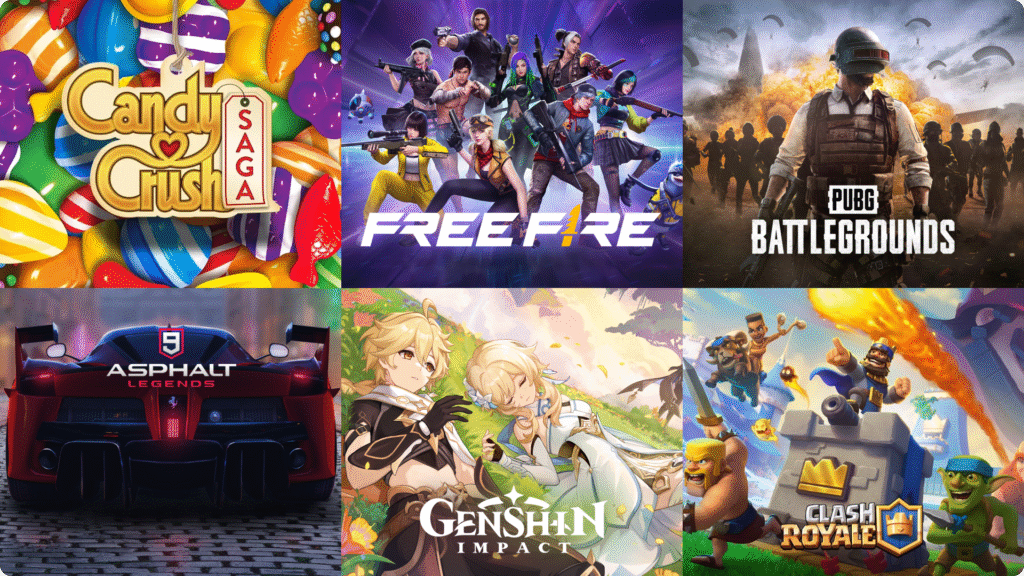
Thanks to mobile game LiveOps, many games like Free Fire, Candy Crush Saga, Clash Royale, Asphalt 9 Legends continue to be exciting even years after they are released.
From Wikipedia reports, Last War: Survival
In 2024, monthly income climbed by 360%, from $30 million to $138 million. According to Wikipedia, the game’s lifetime earnings exceeded $1 billion in September 2024 and $2 billion in February 2025.
Genshin Impact (miHoYo)
Genshin Impact achieved one of the quickest milestones in history, generating around $393 million in revenue within two months of its beginning and surpassing $1 billion by March 2021.
PUBG Mobile
PUBG Mobile spending surged by 365% in the first week of the Royale Pass system compared to the preceding three weeks when launched and still at the peak.
New content and events keep players coming back. In addition, limited-time events and unique rewards make them more engaged. A downloadable experience becomes a living world that captures players for years instead of days by combining urgency, individualized touches, and social play.
LiveOps Tools for Game Developers
Modern gaming is heavily dependent on live operations technologies. These are the services and technologies that enable indie game developers and big studios alike to view their work as fluid, real-time experiences instead of finished products.
LiveOps tools enable studios to maintain player engagement many months after release, from data analysis to player interaction, monetization, and community management.
- Analytics & Insights
GameAnalytics, Firebase, Mixpanel
Track retention, progression & monetization - Experimentation & Config
Firebase A/B Testing, Unity Gaming Services
Test features, pricing & tweak difficulty instantly - Engagement & Communication
OneSignal, Braze, Leanplum
Push notifications & in-app messages
Discord – build strong player communities - Monetization & User Acquisition
Xsolla, RevenueCat – payments & economies
AppLovin, ironSource – ad optimization
Adjust, Appsflyer – track campaigns - Community & Support
Helpshift, Zendesk – player support
Discord – loyalty & feedback
Player Engagement Lifecycle Frameworks
LiveOps player engagement initiatives keep games interesting and alive long after their release. The best games are dynamic worlds constantly evolving with new challenges, large rewards, and social interaction instead of being a one-time buy. LiveOps incentivizes players to return, discover, and remain committed to the experience by this continuous feeling of change.
- New Content: LiveOps content updates sustain the game for player engagement.
- Seasonal Events: Temporary fun creates excitement.
- Daily Challenges: Create short-term goals to develop habits of play.
- Competition: Leaderboards and tournaments foster competition.
- Personalized Rewards: Rewards that are uniquely developed to enhance motivation.
- Community: Discord, chat, and guilds allow friendships to be formed.
- Feedback Loops: Players stay committed when they are heard.
- Surprise Presents: Surprise gifts bring happiness.
Post-launch Game Content Ideas
Once debut excitement has dissipated, post-launch content sustains a live service game. The steady flow gives players fresh reasons to come back. The best ideas are not only beautiful; they are also sustainable, varied, and designed with player’s interests and requirements.
- New Levels/Maps – Provide players with new worlds to explore and dominate.
- Challenges and Quests – Every day and weekly challenges to prolong the adventure.
- Time-sensitive Rewards – Unique skins or items that generate excitement and urgency.
- Collaborations – Entertaining crossovers with mainstream brands, films, or games.
- Live Tournaments – Competitive PvP tournaments with leaderboards and rewards.
- Social Features – Leagues, clans, and co-op play to build the community.
- Balancing Updates – Ongoing adjustments to ensure the gameplay is fair, fun, and new.
How LiveOps Boosts Game Revenue?
The monetization model of today’s game is done using LiveOps. Rather than relying on a one-time transaction, it transforms a game into a continuous income source. The aim is simple: keep players engaged with evolving experiences. Then, grow their lifetime value by rewarding loyalty and ongoing participation.
- Hooking for Good: How LiveOps keeps players engaged long term, is by offering new activities, exciting tasks, and social features that bring players back every day.
- Making It Fun to Spend: By offering deals and passes that genuinely seem worthwhile, games make spending feel like a good choice rather than a trap.
- Establishing a Long-Term Affiliation: Game monetization with LiveOps encourages players to come back, play longer, and become a loyal, long-term player with new content and smart promotions.
LiveOps Events for Games
Long after a game is launched, increasing player retention with LiveOps events makes it relevant. By presenting new, fascinating, and limited-time activities, they prompt players to return daily. Through piquing curiosity and rewarding participation, these events enhance short-term engagement, in addition to long-term success and revenue.
- Surprises and fresh stories that redefine the world.
- Activities with a time limit create excitement and urgency.
- Social bonds are deepened by society-at-large festivities.
- Players only feel progress is meaningful when they earn rewards.
- Retains player’s engagement, interest, and repeat visits well after release.
Game as a Service LiveOps strategy
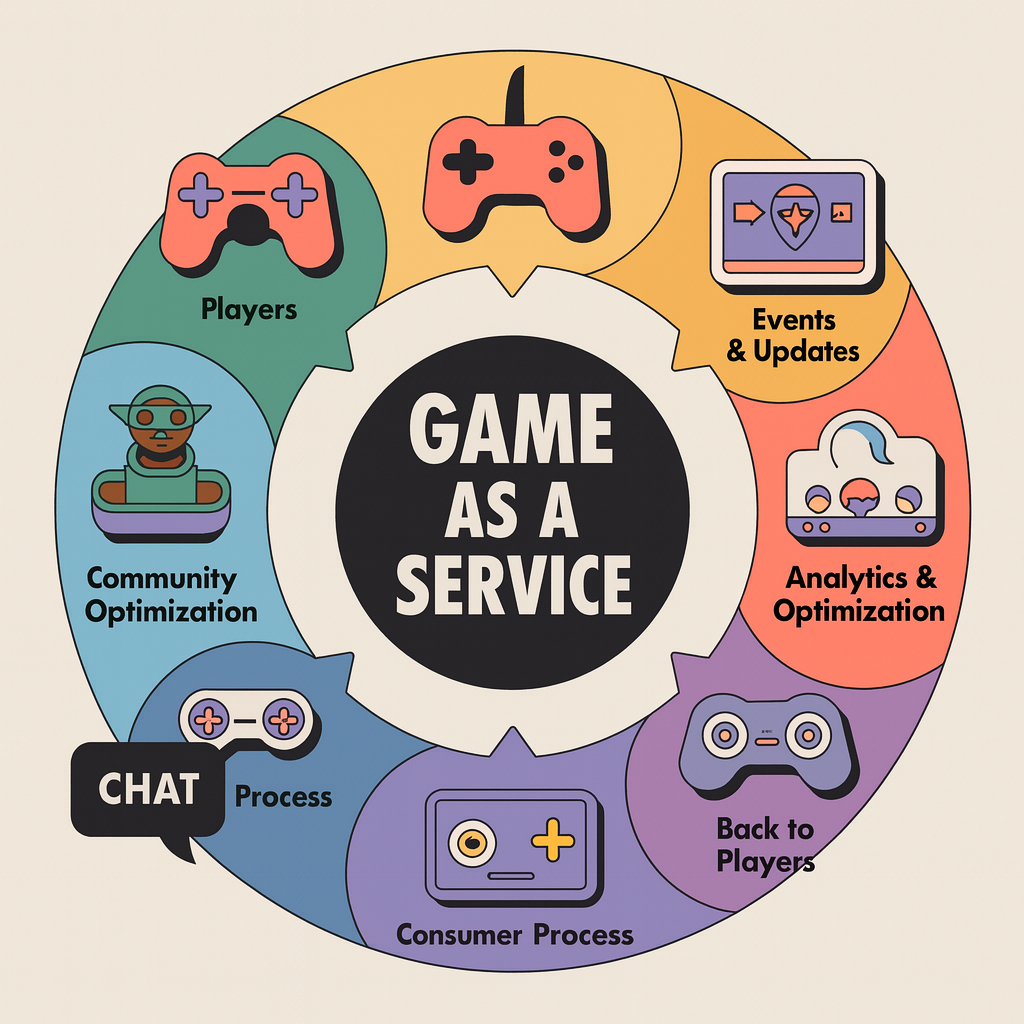
The LiveOps model of Game as a Service (GaaS) LiveOps strategy seeks to turn a game into a changing, dynamic universe instead of an up-front purchase. Unlike conventional games, which have a definite start and end, GaaS is meant to last, and LiveOps is what keeps the experience interesting, compelling, and enduring.
- Ongoing Stream of Content
The game world is sustained and vibrant through regular updates, events, and innovations. - Player-Centric Engagement
Personalization of individual challenges, quests, and promotions based on data for various player types. - Create a Community
Guilds, leaderboards, and social pages assist in building close-knit communities among players. - Smart monetization
Subscriptions, battle passes, and FOMO events are all naturally woven into the game, not forced. - Agile iterations
Analytics, A/B testing, and feedback loops can enable quickly alter and optimize experiences.
Why Choose Xpress Gaming for LiveOps 101?
With over 17 years of global experience, we’ve built 40+ gamified apps and 125+ successful games, giving us deep know-how in delivering quality across platforms. From brainstorming ideas to backend development, testing, and post-launch support we cover every step of the game journey. To make gameplay feel truly real, we involve real players in closed alpha and beta tests, helping us spot and fix issues early.
